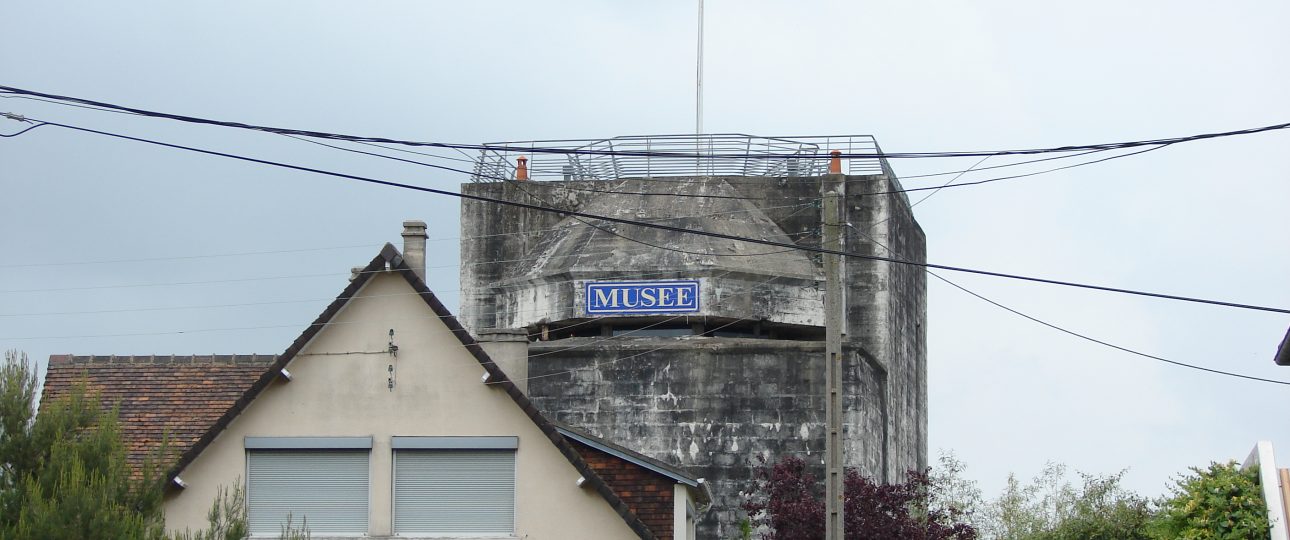Exploring Le Grand Bunker: A Journey into History
In the coastal town of Ouistreham, France, Le Grand Bunker stands as a significant reminder of World War II’s impact on the region. Originally constructed as a German naval command post, this imposing structure now serves as a museum dedicated to the Atlantic Wall, offering visitors a detailed glimpse into the wartime strategies and defenses employed along the Normandy coast.
The Fascinating History of Le Grand Bunker
Le Grand Bunker was built as part of the Atlantic Wall, a vast system of fortifications stretching from Norway to southern France. This particular bunker was a key component of the German coastal defenses, designed to oversee and direct naval operations in the area. After the war, the bunker was preserved and later transformed into a museum, allowing visitors to explore its five levels, each meticulously restored to reflect its original wartime condition.
The museum offers an authentic experience, with rooms filled with original equipment and artifacts that illustrate the daily operations and strategic importance of the bunker. From the command room to the communication center, each area provides insight into the lives of those who worked within its concrete walls.
Why Visit Le Grand Bunker?
Le Grand Bunker is not just a historical site; it is an immersive experience that brings history to life. Here are some reasons to visit:
- Historical Insight: The bunker offers a comprehensive look at the German occupation of France and the strategic importance of the Atlantic Wall.
- Authentic Restoration: The museum’s detailed restoration provides a genuine feel of the wartime atmosphere.
- Engaging Exhibits: Visitors can explore a variety of artifacts, photographs, and multimedia displays that enhance understanding of the era.
- Scenic Surroundings: Located near the beach, the bunker offers picturesque views of the coastline, ideal for photography enthusiasts.
Planning Your Visit to Le Grand Bunker
Best Time to Visit
The best times to visit Le Grand Bunker are during the spring and early autumn months, from April to June and September to October. These periods offer mild weather, perfect for exploring both the museum and the surrounding area. Summer months can be crowded, while winter may bring colder temperatures.
How to Get There
Le Grand Bunker is easily accessible by various modes of transportation:
- By Car: The bunker is a short drive from the center of Ouistreham, with parking facilities available nearby.
- By Train: The nearest train station is in Caen, approximately 20 kilometers away. From there, local buses or taxis can take you to the bunker.
- By Bus: Several bus services connect Caen to Ouistreham. Check local schedules for the most convenient options.
Local Transportation
Once in Ouistreham, getting around is straightforward. The town is compact, with many attractions within walking distance. Biking is also popular, with rental services available for those who prefer to explore on two wheels.
What to Expect During Your Visit
Upon entering Le Grand Bunker, you’ll find a museum-like atmosphere that invites exploration. Here’s what to expect:
Guided Tours
Consider joining a guided tour for a deeper understanding of the bunker’s historical context. Knowledgeable guides provide insights into the various rooms and the significance of the artifacts displayed.
Exhibits and Artifacts
The museum features a range of exhibits, including:
- Original communication equipment from the war.
- Photographs and documents detailing the bunker’s operations.
- Models and diagrams illustrating the strategic importance of the bunker.
Interactive Displays
Interactive elements throughout the museum engage visitors of all ages, making the history of the bunker accessible and engaging.
Nearby Attractions
While visiting Le Grand Bunker, take the opportunity to explore other nearby attractions:
Ouistreham Beach
A short walk from the bunker, Ouistreham Beach is ideal for a leisurely stroll or picnic. The beach is historically significant as part of the D-Day landing zones.
Memorials and Museums
Consider visiting:
- Juno Beach Centre: A museum dedicated to the Canadian forces’ role in the D-Day landings.
- Caen Memorial: This museum provides extensive information about World War II and the Battle of Normandy.
Local Cuisine
Don’t miss the chance to try local dishes. Ouistreham’s restaurants offer a variety of culinary delights, including seafood and traditional French cuisine. Be sure to sample:
- Calvados: A renowned apple brandy from the region.
- Seafood: Fresh fish and shellfish, reflecting the town’s coastal location.
Tips for Your Visit
To enhance your experience at Le Grand Bunker, consider these tips:
- Wear Comfortable Shoes: The bunker has multiple levels and involves a fair amount of walking.
- Bring a Camera: Capture the fascinating architecture and scenic views.
- Check Opening Hours: Verify the opening hours before your visit, as they may vary seasonally.
- Be Respectful: Remember that you are visiting a site of historical significance. Maintain a respectful demeanor.
Summary of Key Facts
- Location: Ouistreham, France.
- Constructed: As part of the Atlantic Wall during World War II.
- Best time to visit: April to June and September to October.
- Nearby attractions: Ouistreham Beach, Juno Beach Centre, Caen Memorial.
- Local cuisine: Calvados and fresh seafood.
- Transportation: Accessible by car, train, or bus.
Le Grand Bunker offers a compelling visit for history enthusiasts and casual tourists alike. Its rich historical context, combined with engaging exhibits and a beautiful coastal setting, makes it a destination worth exploring. Plan your trip and immerse yourself in the stories that shaped this part of France during one of the most tumultuous times in history.




